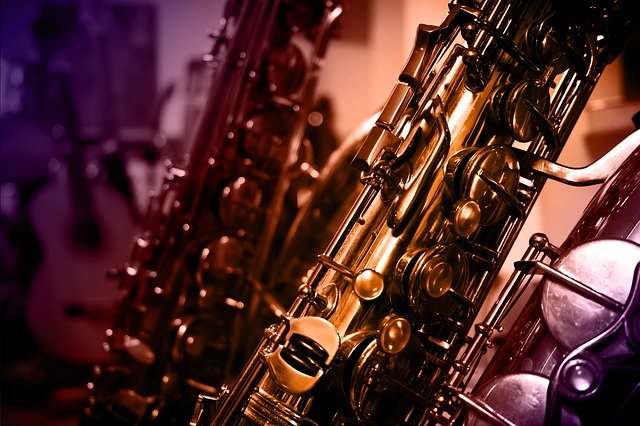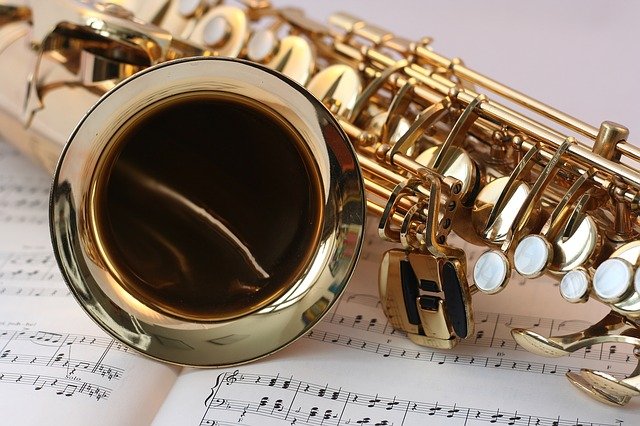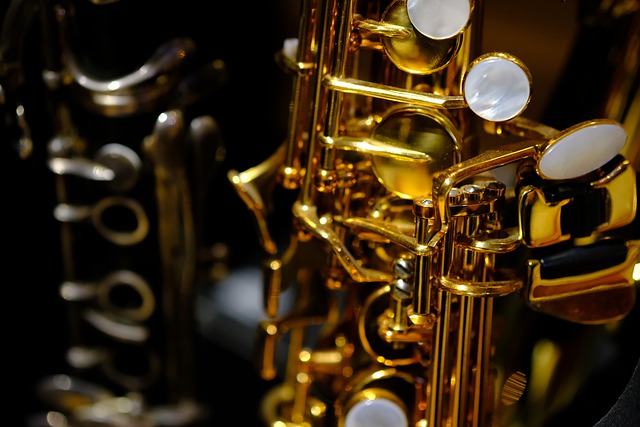Buying a saxophone can be overwhelming – there are so many things to consider. How do you know if the saxophone is for you? How much should you spend on an instrument? How do you buy a sax without getting ripped off?
In order to make this buying process more comfortable, I’ve done a little research and came out with this
four things to consider:
- Figure out if a saxophone is right for you?
- Know what kind of music you want to play
- Set your Budget
- Make sure you have time to practice.

Is saxophone right for me?
Before you even think about buying a saxophone, you need to know if you really want to play this instrument and spend time to learn it.
There are many instrument out there to master, and having a clear vision of why you want to learn saxophone will help you go through the mastering process much easier and will bring you much more satisfaction.
If you want to check out what to expect when learning saxophone you can check out our article: Is saxophone hard to learn?, where I talk about few details that might help you decide.
However if you have already made up you mind then, what I would recommend before is to think about what kind would be best for your body and mind.
The saxophone family mainly includes soprano, alto, tenor, baritone, and bass saxophones.
How do you tell which one is right for you? All instruments are different in composition and size so it’s important to get the right fit for your body.
Soprano saxophones are the smallest of all 5 sax types so they’re ideal if you have a smaller frame or shorter arms.
They also require less breath power than larger models so they’re easier to handle at first. If you’re really small this is probably the best place to start.
It’s really important to get the right size and shape because your body plays an enormous role in how well you’re able to take control over the instrument.
But also keep in mind that what matters most is how comfortable it feels when you play it – so pay attention to these details while you’re trying it out in store:
- How heavy is the saxophone?
- Is it too heavy for you to handle comfortably?
- How easy is it to access all of the notes?
- How easy is it to put together or take apart for cleaning, maintenance, etc.?
- How uncomfortable are your fingers after holding the saxophone for long periods of time?
- How does playing feel with both hands?
- How hard are some of the higher notes so I know if they’ll come easily to me or not.
How do I know what kind of music to play?
Okay, now that we have the body/mind issue sorted out, let’s move on to another important part – how do you know what kind of music you want to play?
If your mind is set on playing soulful ballads or hip hop tunes, then it doesn’t really matter which saxophone you choose because they’re all great for those types of genres.
However, if you’re interested in classical or jazz music, then there are some differences between instruments so your choice will need a little more thought.
For one thing, classical and jazz require a bit more breath control than other genres so your saxophone needs to accommodate that.
With that in mind, sopranos aren’t the best choice because you’ll have a harder time managing the more demanding lower octave notes.
Consider what style of music you enjoy playing, and whether you want an instrument with a big sound or small enough to blend into the ensemble.
Classical players tend towards darker sounding instruments and saxophones with larger tone holes (for example: Selmer Mark VI).
Jazz players prefer bright, punchy sounds and instruments with smaller tone holes (such as Conn 6M Alto Saxophone).
Rock saxophonists often have custom-made horns from their studio experiments – so there really is no perfect sax for rock and roll.

How much should I spend?
While there are many great deals online, it is important to have an idea of what you can afford in order to get a fair price.
There are certainly bargains available out there, but a good way to avoid being overcharged is to do your research beforehand!
Saxophones range from around $200 up to 10,000 depending on the brand and features.
There is also an alternative way to get your hands on a saxophone by getting a second hand instrument.
If you want to learn more about the process of buying a used saxophone, check out this article: 15 Important Things to Consider When Buying a Used Saxophone?
When it comes time to purchase your new saxophone make sure you ask these questions:
- How much does it cost initially?
- How long have they owned it?
- Have they ever had any major problems with the saxophone?
If you’re interested to read about the Sax prices in detail check out our article on: How much does a saxophone cost?
Do I have time to practice?
One of the most important factors to keep in mind when purchasing a new instrument is how you are going to find the time to practice!
Make sure that your schedule can accommodate at least an hour or two each day – if not more.
If this seems like too big of a commitment right now, you may want to wait until things calm down before making an investment in an instrument.
Learning all about how often you should be practicing here: How Often Should I Practice Saxophone.
I hope this article has helped to steer you in the right direction!


